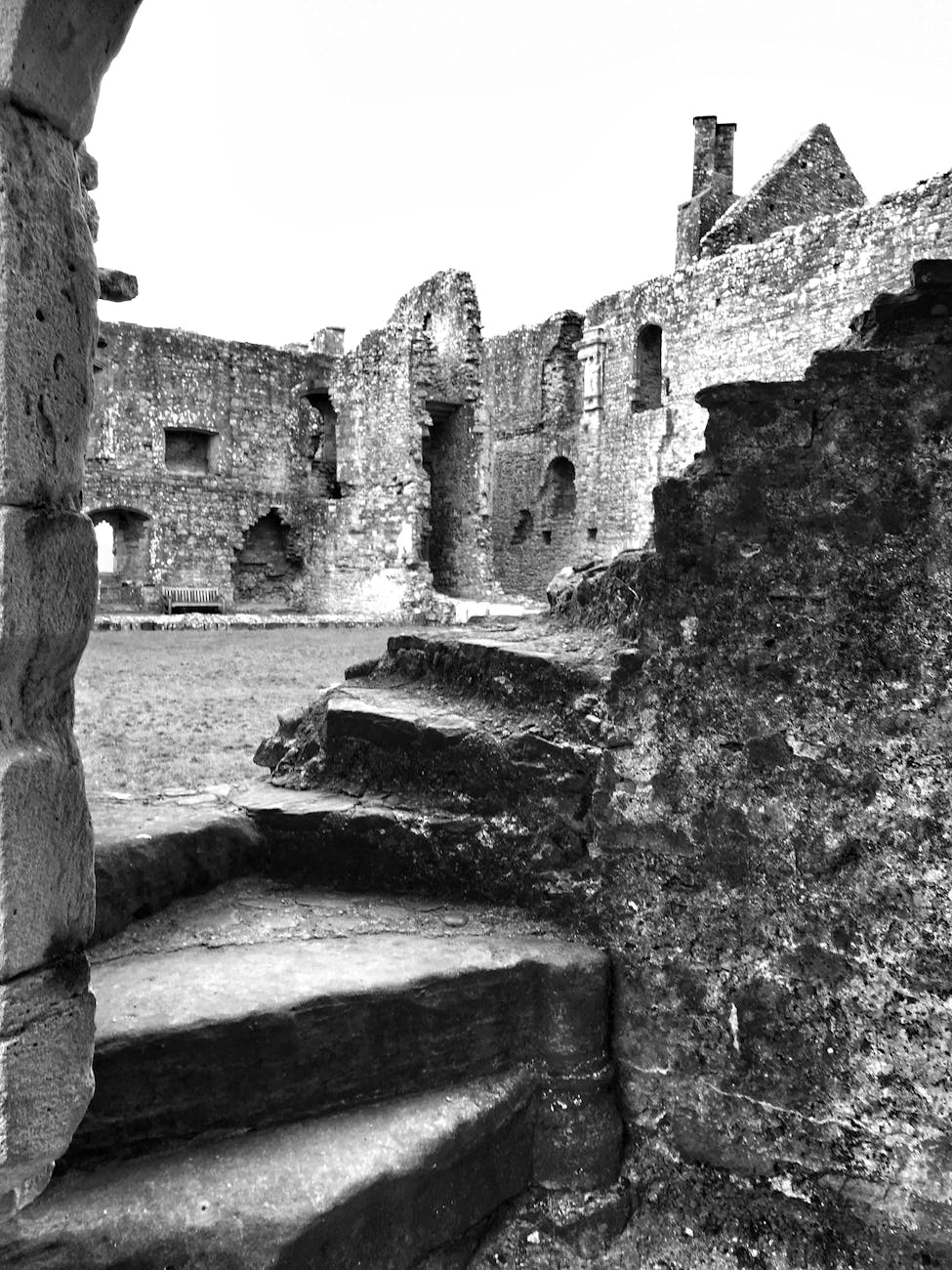The stone sentinels: anatomy of a medieval fortress
When we picture a Knight Templar, clad in his iconic white mantle emblazoned with the red cross, we often imagine him on the battlefield. But for much of his service, a knight’s world was defined not by open combat, but by the towering stone walls of a castle. These were not mere residences; they were the cornerstones of power, projection, and survival in a hostile world, particularly in the Crusader States. The art of the siege was a brutal, intellectual chess match, and the castles were the board.

Early medieval fortifications, like the motte-and-bailey, were primarily earth and timber structures—effective for their time but vulnerable to fire and rot. The return of Crusaders from the Holy Land brought with it a revolution in castle design, inspired by the sophisticated Byzantine and Arab fortifications they had encountered. The age of stone had truly begun, and orders like the Knights Templar became master builders, creating some of history’s most formidable strongholds.
The fundamental principle of defense was depth. A successful fortress was a layered puzzle designed to exhaust, demoralize, and destroy an attacking army long before they reached the heart of the castle. This started with the location itself. A castle built on a high, rocky outcrop, like the Templar castle of Tortosa, used natural terrain to its advantage, making it nearly impossible to approach with heavy siege equipment.
The first man-made obstacle was often a moat, either wet or dry, forcing attackers to halt and fill it under a hail of arrows. Beyond this lay the outer wall, or curtain wall. These were immense structures of stone, sometimes dozens of feet thick at the base. They were not simply flat barriers; they were engineered for active defense. Projecting towers, both square and later, more resiliently, round, were placed at strategic intervals. These allowed defenders, or enfilading fire, to shoot down along the face of the wall, creating deadly crossfires where no attacker was safe. The tops of the walls were crowned with battlements, the iconic notched parapets (crenellations) that provided cover for archers while allowing them to fire upon the enemy below.
The gatehouse was the castle’s most vulnerable point, and therefore, its most heavily fortified. It evolved from a simple gate into a complex death trap. A single approach might feature a drawbridge, a heavy iron portcullis (or two), and thick wooden doors. Above the passage were ‘murder holes,’ allowing defenders to drop rocks, hot sand, or quicklime on anyone trapped below. The entire gatehouse was a self-contained fortress within the fortress, designed to hold out even if the outer walls were breached.
For the ultimate in defense, the Templars and other Crusader orders perfected the concentric castle design, famously exemplified by the Hospitaller’s Krak des Chevaliers. This was a castle within a castle. If an attacker breached the outer wall, they found themselves trapped in a narrow killing ground, exposed to fire from the even taller and stronger inner wall. This design was a masterpiece of psychological and physical warfare, making a direct assault a suicidal prospect.
The iron tempest: engines of medieval destruction
For every brilliant defensive innovation, a new and more terrible offensive solution was devised. An army arriving at the gates of a mighty fortress could not simply knock. They brought with them a fearsome arsenal of medieval artillery, complex machines of wood and iron designed to tear down the work of master masons. This was the domain of siege engineering, a specialized field that blended physics, carpentry, and brute force.

Siege engines can be broadly categorized by how they generated power. The earliest were torsion engines, which used the power of twisted ropes, much like a wound-up rubber band. The Roman ballista, essentially a giant crossbow, was a holdover that saw continued use. It was an anti-personnel weapon, firing huge bolts or javelins with terrifying accuracy to sweep defenders from the battlements. The mangonel, on the other hand, was an area-effect weapon. It used a single arm, held in tension by a twisted skein of rope, to fling a payload of rocks in a high arc over the walls, causing chaos and damage within the castle grounds.
However, the undisputed king of the medieval battlefield was the trebuchet. Unlike the mangonel, the trebuchet was a counterweight engine. It used a massive weight (often tons of lead or earth in a huge box) on the short end of a pivoting arm. When released, the weight would drop, whipping the long arm upwards and launching a projectile from a sling with incredible force and range. A large trebuchet could hurl massive stones weighing over 300 pounds for hundreds of yards, capable of shattering stone walls after repeated impacts. They were also instruments of psychological warfare, used to launch diseased animal carcasses or even captured messengers over the walls to spread disease and terror.
While artillery battered the walls from a distance, other machines were designed for direct assault. The simplest was the battering ram, a massive log, sometimes tipped with iron, suspended from a frame and housed in a mobile shed called a ‘penthouse’ to protect its operators from enemy fire. Its job was to hammer relentlessly at a gate or a weakened section of wall. For reaching the top of the walls, attackers employed siege towers. These were massive wooden structures, often taller than the walls themselves, painstakingly rolled into position. The top level housed a drawbridge that could be dropped onto the battlements, allowing a flood of soldiers to pour onto the walls. Getting these lumbering beasts into position was a perilous task, as defenders would try everything to set them ablaze with flaming arrows or pots of incendiary materials like Greek Fire.
The human element: strategies of attack and defense
While the towering castles and fearsome war machines dominate our imagination, the outcome of a siege often rested on the discipline, ingenuity, and endurance of the soldiers on both sides. A fortress was only as strong as its garrison, and a siege engine was useless without a skilled crew and a clever commander.

For the attackers, the first decision was whether to attempt a swift assault or a protracted siege. A direct attack was costly and bloody, but if successful, it was quick. More often, an army settled in for the long haul, aiming to starve the defenders into submission. This involved a complete blockade, known as circumvallation, where the attacking army would build its own set of fortifications around the castle to prevent any supplies from getting in or any messengers from getting out. This turned the castle from a fortress into a prison.
A more insidious tactic was mining, or ‘sapping’. Specialist engineers would dig a tunnel up to the base of a castle wall, often under the cover of a mobile shelter. Once beneath the foundations, they would line the tunnel with wooden props and then set it on fire. As the props burned away, the tunnel would collapse, bringing a section of the stone wall above it crashing down and creating a breach for the attackers to storm.
The defenders, particularly disciplined military orders like the Templars, were far from passive victims. Their entire existence was structured around readiness and defense. A well-stocked castle could hold out for months, even years. Defenders had their own counter-tactics. To combat mining, they would engage in counter-mining, digging their own tunnels to intercept the attackers underground, leading to vicious, claustrophobic skirmishes in the dark. Archers were the backbone of the defense, raining down a constant stream of arrows on the attackers from the safety of the walls and arrow-slit windows. While Hollywood loves to depict defenders pouring boiling oil, it was an incredibly expensive resource; boiling water, hot sand, or even sewage were far more common and just as effective at deterring soldiers trying to scale the walls with ladders.
Perhaps the most daring defensive maneuver was the sortie. This was a surprise attack where a group of defenders would rush out of the castle, usually at night, with a specific objective: to burn the enemy’s siege engines. For a Knight Templar, this was a moment of extreme risk and high reward. Success could cripple the enemy’s ability to breach the walls and significantly prolong the siege, while failure meant certain death outside the safety of the gate. It was in these moments of calculated violence and disciplined courage that the true character of the medieval warrior was forged, not just in their uniform, but in the crucible of the siege.
Ultimately, medieval siege warfare was a relentless cycle of innovation. A stronger wall led to a more powerful trebuchet. A taller siege tower led to higher castle battlements. This brutal dance between architect and engineer, attacker and defender, shaped the landscape and the very course of history in the age of the Knights Templar.







